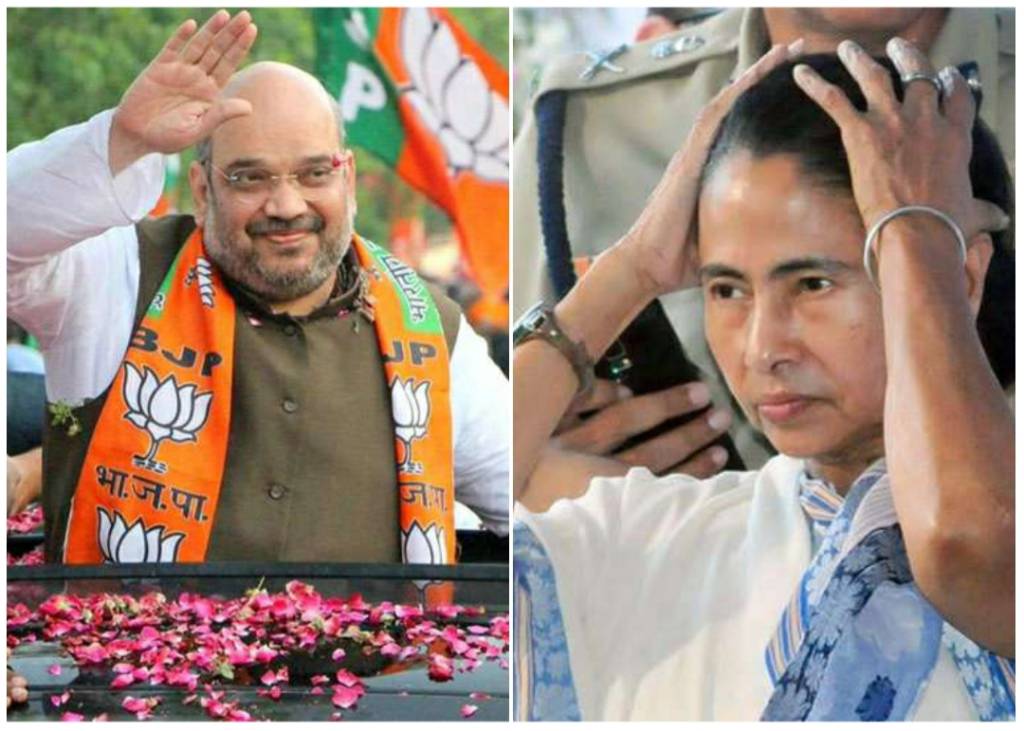Earlier, the BJP was used to be called a party of upper caste and upper-class people, with their main voter base primarily residing in urban areas. The character of the party, however, changed dramatically in the last few years especially after Modi-Shah came to the helm of party affairs. In West Bengal, the party is a polar opposite of what it used to be traditionally and has a different voter base.
In Bengal, BJP’s prime voter base consists of OBCs, SC, and STs. Riding on popularity in these communities; the party managed to win 18 seats out of 42 in 2019 general elections in West Bengal. The constituencies that the party majorly won in 2019 were rural– primarily in the Western and Northern regions of the state.
The politics of West Bengal has always been dominated by Bhadralok Community, which constitutes three upper castes- Brahmin, Baidya, and Kayastha. These castes account for just 20 per cent of the state’s total population. But, all the CMs of the state– whether of CPM, Congress, or TMC– have been from the Bhadralok community. OBCs, SCs, and STs never had a say in the politics of Bengal. And this was because the Communist Party never recognized the role of caste in social upliftment.
After the Mandal Commission report suggested for a quota to Other Backward Classes, the then CM of West Bengal, Jyoti Basu said, “West Bengal has only two castes- rich and poor.” The Communists never realized the peculiar nature of Indian society where caste matters more than the class, and therefore, the politics of the state remained in Bhadralok elitism.
Mamata Banerjee, the CM of the state for the last 9 years, ran the government just like the Communists. The only difference was that she carried out even a greater degree of Muslim appeasement. The state has 17 per cent quota for OBCs, 10 per cent of which is reserved for Muslims. Hindu OBCs constitute more than half of the total OBC population but their quota share is less than that of the Muslims. Apart from this, the state has 22 per cent quota for SCs and 6 per cent for STs in the state government jobs and the state-supported educational institutions.
Therefore, BJP is targeting the Hindu OBC votes to come to power in the state. Since the early 2010s, RSS has been tirelessly working in the state, especially in the OBC and ST dominated areas. Dilip Ghosh, the current President of West Bengal BJP who was appointed in 2015, comes from Sadgop caste and is from Jungle Mahal region of West Bengal.
The party has performed excellently in both 2016 assembly elections and 2019 general elections since Ghosh was appointed as the President in the region. In the 2019 general elections, the party won 40.64 per cent votes in the state- only 3percent less than that of TMC. In both the elections, the party gave tickets to a large number of Hindu OBCs, who have been traditionally ignored by all three mainstream parties of the state.
BJP has regularly accused TMC of ignoring the Hindu OBCs. “We will carry out a week-long campaign in all Assembly constituencies to let people know that the government is depriving Hindus by allotting more than half of the OBC quota to Muslims, even though Hindu OBCs constitute a bigger chunk of the population than Muslims. We will read out before crowds the list of OBC communities enjoying reservation and will leave it to the people to draw their conclusion. It’s crystal clear and no one will have any difficulty in getting the picture,” said Swapan Pal, president of state BJP’s OBC morcha.
OBCs are dominant in Purulia, Jhargram, Krishnanagar, Hooghly, Balurghat, Bankura and Midnapore Lok Sabha seats. BJP won all these seats in 2019 except for Krishnanagar.
Apart from the Hindu OBCs, the SC and ST population — which constitutes about 23 and 6 per cent of the state population respectively, is the other major target vote bank for BJP. Both of these communities are in sizable numbers in the Western and Northern West Bengal. But the political domination of TMC and CPM had kept them away from the power in central politics. Namashudras Dalits– who are a sizable community in the state– also voted in large numbers for BJP in the last election as the saffron party was first to raise the voice of marginalized Namashudras, members of whose community were massacred by Communists in 1979 in Marcihjhapi massacre.
Kolkata, the centre of Bengali culture, commerce, and politics for decades, has been left for TMC by BJP as the city mostly constitutes of Bhadralok elites, and one-third of the SC/ST population of Kolkata stays in a cluster of only eight wards in the eastern part of the city with a total of 141 wards.
Presumably, in 2021 assembly elections, the people from the non-Bhadralok community are going to reclaim their rightful place in West Bengal’s politics and this will change the image of the state forever. The left-front and the TMC have destroyed the economy of the state and a regime change is necessary to put the state back on the path of growth. Now, only a regime change can bring back the golden days of ‘Amar Sonar Bangla’.
